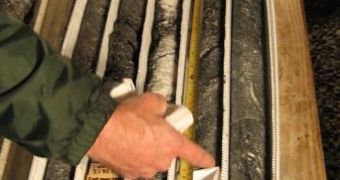While massive asteroid impacts have the potential to cause global extinction events on the surface, they are apparently good news for microorganisms living below Earth's crust, a new study has uncovered.
The conclusion came after scientists at the University of Edinburgh in Scotland conducted a study of an ancient impact crater in the Chesapeake Bay. The biological census they conducted revealed that cosmic impacts create new niches for microbes to expand into.
In fact, stronger and larger impacts translate into more such niches. Events such as the one, which led to the disappearance of dinosaurs, about 65.5 million years ago, may have caused a significant increase in the subterranean microbe population around the world.
Microorganisms living underground have been discovered relatively recently, and scientists were surprised at just how many of these creatures exist. Statistics estimate that these populations may account for as much as one third of our entire planet's biomass.
Though the environment they inhabit may appear to be inhospitable to life at first, there are in fact ways in which these lifeforms can endure. Some feed off scraps of organic matter that make their way through the rocks from the continents or oceans above.
Others feed off chemical reactions they conduct with chemicals such as iron and sulfur. Another class of organisms can live off the natural decay of radioactive elements such as uranium. These feeding options do not make the subterranean environment welcoming, but it does make it livable.
The benefit of living so deep underground is that nothing can disturb the peace, other than the occasional earthquake or volcanic eruption, and the even-less-common asteroid impact. Global warming, ice ages, heavy tornado seasons and similar events are of no concern to these microbes.
“Impacts can fracture the rocks in the deep surface, which will allow fluids and nutrients to flow in,” UE investigator Charles Cockell explains. This overabundance of resources contributes to population increases of several hundred percent in the short term, Astrobiology Magazine reports.
Investigations such as this one may have other applications than understanding how Earth's systems work. Investigators say that the data acquired during drilling experiments can be used to determine the best place to conduct similar investigations on Mars and other worlds.

 14 DAY TRIAL //
14 DAY TRIAL //